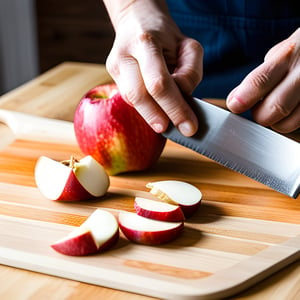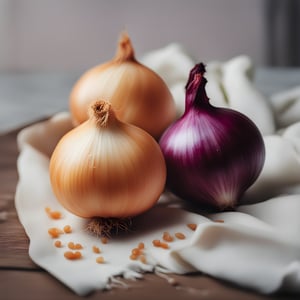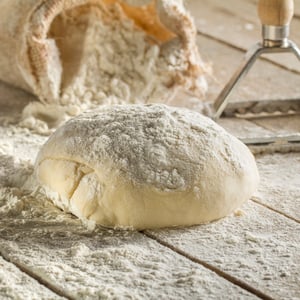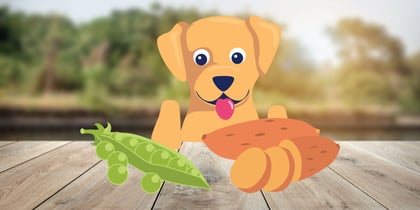Pet-Proofing your Home and Yard (by Season)

Table of Contents
As a responsible pet parent, it's important to remember to take measures at home to keep your furry friends safe throughout the year. Different seasons bring their own unique set of dangers that can harm our pets if we're not careful or prepared.
In this blog post, I'll be sharing with you tips on how to pet-proof your home and yard for each season.
🔑 Key Takeaways:
-
Be aware of potential dangers to your pet that change with the seasons, such as toxic plants, chemicals, and weather conditions.
-
Regularly check your home and yard for hazards and take steps to prevent your pet from accessing harmful substances or objects.
-
Keep a watchful eye on your pet, especially during holidays, outdoor activities, and when temperatures are extreme.
Fall Pet-Proofing Tips
It's a beautiful time of the year, but Fall also brings some potential hazards for our pets. Here are a few things to be mindful of:
Halloween Decorations
Spooky decorations add to the holiday spirit but can also pose risks such as electrical cords, small attachments that can be a choking hazard, or fire hazards from candles. Secure your fall decorations out of reach of pets.
Candy and Trick-or-Treat Bags
Any candy containing xylitol and all forms of chocolate are toxic for pets, so make sure to safely store candy and trick-or-treat goodie bags where your pet cannot access them.
Mushrooms
Some wild mushrooms that grow in our yards can be toxic if ingested by pets. Keep an eye on the yard and remove any mushroom growth promptly.
Ticks
These pesky creatures can carry Lyme disease, so it's crucial to keep your yard clean, use veterinary-approved tick preventatives, and check your pets regularly for ticks.
Fallen Leaves
Leaves can conceal sharp objects, thorns, or other debris that can harm our pets. Also, decomposing leaves can expose your pets to mold, causing stomach upset or respiratory problems. Pick up leaves before they start decomposing.
Wildlife
With fall comes a new season for wildlife, and many wild animals may be more active during this time. Keep an eye out for any potential dangers before letting your pets out into the yard.
Safe or Unsafe? Fall Foods for Dogs Quiz
View Results
Safe or Unsafe? Fall Foods for Dogs Quiz
Safe Foods

Pumpkin

Sweet Potato

Peanut Butter

Sliced Apples

Lean Turkey

Pears

Blueberries

Carrots

Green Beans

Cranberries
Unsafe Foods

Onions

Raw Potatoes

Chocolate

Whole Apples

Turkey Skin and Bones

Grapes

Raisins

Spicy Foods

Bread Dough

Acorns
Share Quiz
Winter Pet-Proofing Tips
With winter’s chill comes some specific seasonal hazards to watch out for.
Antifreeze
This sweet-smelling liquid can be attractive to pets but contains ethylene glycol, which is toxic even in small amounts. Always store antifreeze properly and dispose immediately after use.
Snow Melt and Deicers
De-icers on sidewalks and driveways can irritate paws and be toxic if ingested. Consider using booties or wiping your pet's paws with a washcloth after they've been outside.
Holiday Decorations
Holiday decorations are common this time of year but can present choking hazards. Electrical cords for lights can cause electrocution if chewed on, and falling Christmas trees can injure pets.
Some families will elevate the Christmas tree off the ground on a table or stand. Another option is a temporary fence (x-pen) around the tree.
Holiday Toxic Plants
Poinsettias and mistletoe are popular winter holiday plants but can be toxic to pets if ingested. They should be displayed where pets can’t get to them.
Cold Weather
Exposure to colder temperatures can lead to hypothermia or even frostbite for our furry friends. Limit time outside when temperatures are below freezing and use winter clothing such as sweaters, coats, and booties to keep pets toasty.

Ice and Snow
Ice and snow can be slick causing some pets to slip, fall, and injure themselves. Falling ice or snow from rooftops, trees, or branches can also cause injury to pets. Clearing your driveway and creating a path for potty breaks can help keep your pet safe after a storm.
Spring Pet-Proofing Tips
Spring is a lovely season with pets, with many new sights, smells, and sounds to experience. However, Spring also brings some new dangers to your yard.
Fertilizers and Pesticides
As spring brings warmer weather, many people will tend to their garden using fertilizers and pesticides which can be toxic to pets if ingested. Try to use non-toxic or organic products or products that are labeled as safe for pets.
Ticks
Ticks can carry and spread diseases such as Lyme Disease that can infect pets. Keep your grass short, clear debris from the yard, and use veterinary-approved tick preventatives
Toxic Spring Plants and Flowers
Lilies are popular in the springtime but pose serious risks to pets if ingested. Keep lilies and other toxic plants out of reach of pets including having none growing in the yard.
Chocolate and Easter Treats
Chocolate and other candies (with artificial sweeteners) can pose risks to pets if swallowed. Make sure easter eggs are all picked up after the hunt and keep baskets full of goodies off the ground and out of reach of dogs and cats.
Bees
Some pets can be allergic to bee stings, so watch them closely while outside. It is always a good idea to have some Benadryl on hand in case of a sting. If your pet shows any signs of an allergic reaction (swollen eyes, lips, tongue, or face, or trouble breathing), contact your veterinarian immediately.
Benadryl Dosage Calculator for Pets
Benadryl Dosage Calculator for Pets
View Results
Your Pet's Benadryl Dosage
In mg (tablets):
In ml (liquid - 12.4 mg/5ml concentration):
Number of 25 mg tablets:
Tablets or Liquid?
Liquid is ideal for cats and dogs weighing less than 10 lbs, and tablets are preferred for pets weighing more than 10 lbs. Make sure to check the ingredients of liquid Benadryl for the artificial sweetener xylitol, as it is toxic for dogs. For those pets who do not like the liquid flavors, the tablets can be more easily hidden in tasty treats.
Frequency
The typical recommended frequency of Benadryl for pets is up to 3 times per day (every 8 hours in a 24-hour period). Always consult with your veterinarian to find out how often your pet can safely take Benadryl and never give more than the recommended dosage of Benadryl or more often than every eight hours in a 24-hour period. Giving more than the recommended dose of Benadryl or giving too many doses in a 24-hour period increases the risk of Benadryl overdose in your dog or cat.
If you’d like to chat with a veterinarian about a safe dosage and frequency to administer Benadryl to your pet, a virtual vet visit is a great way to connect with a doctor quickly without leaving home.
Share Quiz
Summer Pet-Proofing Tips
Summer is a great time to get outside and explore with your pet, with long, sunny days and warmer temperatures. There are some summer-specific safety issues to remember:
Heat Safety
Heatstroke can be life-threatening, so make sure to provide shade, fresh water, and limit outdoor time to early mornings or later evenings.

Swimming Pool Safety
Pools can be a drowning hazard or toxic if your pet drinks the treated water. Watch your pet carefully around pools and consider fencing around the pool to prevent falling in or ramps/stairs that pets can easily navigate if they fall in.
Mosquitoes and Insects
Warmer temperatures attract mosquitoes, fleas, and ticks, so use monthly preventatives and consider treating your yard with a pet-friendly repellent to protect your pet.
Grills and Firepits
Always watch your pets closely when cooking outdoors. The heat from grills and fire pits can cause serious burns and food with bones being cooked on a grill can lead to choking hazards or intestinal blockage.
Toxic Summer Plants and Flowers
Lilies, oleander, and sago palm are a few examples of plants that can be in the yard in the summer that are toxic to pets if ingested and should be removed from your yard.
Are You a Pet Safety Expert?
1. Which one of the plants below is toxic to cats if ingested?
2. Which of the foods below is generally considered safe for your dog to eat?
3. Above what temperature is too hot to leave a pet in your car?
4. Which kind of leash is the safest to walk your dog?
5. True or False: If a medication is safe for humans, it is probably safe for pets.
6. What should you do if you think your pet ate something toxic?
View Results
Are You a Pet Safety Expert?
1. Which one of the plants below is toxic to cats if ingested?
2. Which of the foods below is generally considered safe for your dog to eat?
3. Above what temperature is too hot to leave a pet in your car?
4. Which kind of leash is the safest to walk your dog?
5. True or False: If a medication is safe for humans, it is probably safe for pets.
6. What should you do if you think your pet ate something toxic?
Share Quiz
Pet-Proofing Tips for All Seasons
Some other common pet hazards in your home and yard are present all through the year, so it’s important to check the list of dangers below often:
Chemicals
Store chemicals such as fertilizers, pesticides, and antifreeze in a safe place away from pets.
Alcohol, Drugs, and Medications
Safely store these substances in a place that cannot be accessed by curious pets, as they can be toxic if ingested.
Candle Safety
Candles, especially if used in jack o'lanterns, should be used out of reach of pets or in areas that cannot be knocked over.
Trash Cans
Use a trash can with a lid or secure it in a closet to keep out prying pets. Trash containing choking hazards or toxic substances poses a risk for your curious cat or dog. Keep a tight lid on the trash that your pet cannot get into.
Yards and Fencing
Fenced-in yards provide safety and security keeping pets safely contained, preventing them from wandering off or running into traffic. Keeping pets contained in the yard also protects against dangers such as wildlife or stray animals.
Wires and cords
Keep wires and cords out of reach of pets or use protective coverings that reduce the chance of electrocution if chewed on.
Conclusion
Pet-proofing your home and yard is an ongoing process that requires attention in every season. By being aware of seasonal hazards, taking preventative measures, and closely supervising your pet, you can significantly reduce the risk of accidents and illnesses.
If you have any questions or concerns about pet-proofing your home or your dog or cat’s specific health needs, please don't hesitate to schedule an in-home vet visit. BetterVet’s team of experienced care teams can provide tailored advice and recommendations to keep your furry friend safe and happy.
Get Your Pet’s Health Checked Out at Home
Say goodbye to stressful vet visits and hello to a comfortable wellness exam in your pet's favorite spot.
Frequently Asked Questions
Do I need to dog-proof my house?
Yes. You should dog-proof your house and yard to ensure they are free of hazards and are safe for a new puppy or dog before bringing them home.
What does it mean to be pet-proof?
Pet-proof means that your home environment has been modified to keep pets safe both inside and outside. It also refers to landscaping, building materials, and furniture that is tough enough to withstand ongoing wear and tear from pets.
How to dog-proof your lawn?
Some steps to dog-proof your lawn include installing fencing around the perimeter, pools, and gardens, choosing non-toxic plants and fertilizers, securing chemicals, and supervising your dog around grills and firepits.






